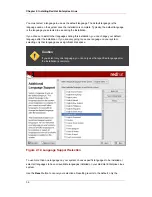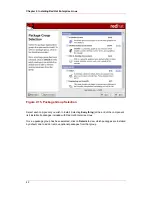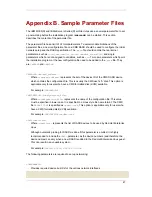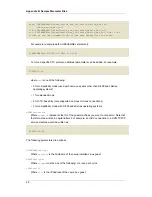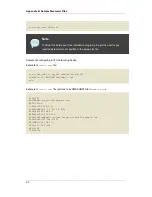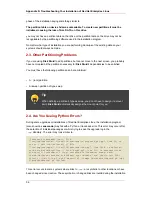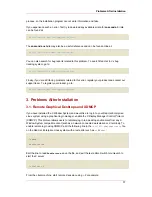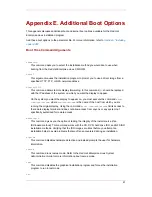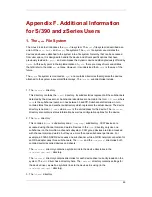
qeth: SUBCHANNELS="<read_device_bus_id>,<write_device_bus_id>,
<data_device_bus_id>"
lcs: SUBCHANNELS="<read_device_bus_id>,<write_device_bus_id>"
ctc: SUBCHANNELS="<read_device_bus_id>,<write_device_bus_id>" Due to the
length of the qeth command line, it has been broken into two lines.
For example (a sample qeth SUBCHANNEL statement):
SUBCHANNELS=0.0.0600,0.0.0601,0.0.0602
To force a specific CTC protocol, additional parameters can be added. For example:
CTCPROT=<n>
where
<n>
is one of the following:
• 0 for compatibility mode (used with non-Linux peers other than S/390 and zSeries
operating systems)
• 1 for extended mode
• 2 for CTC-based tty (only supported on Linux-to-Linux connections)
• 3 for compatibility mode with S/390 and zSeries operating systems
PEERID=<userid>
Where
<userid>
represents the ID of the guest machines you want to connect to. Note that
the ID must be written in capital letters. For example, an IUCV connection to a z/VM TCP/IP
service machine would be written as:
PEERID=TCPIP
The following parameters are optional:
HOSTNAME=<string>
Where
<string>
is the hostname of the newly-installed Linux guest.
NETTYPE=<type>
Where
<type>
must be one of the following: ctc, iucv, qeth or lcs.
IPADDR=<IP>
Where
<IP>
is the IP address of the new Linux guest.
Appendix B. Sample Parameter Files
48
Содержание ENTERPRISE LINUX 3 - FOR IBM S-390 AND IBM ESERVER ZSERIES
Страница 2: ...Red Hat Enterprise Linux 4 ...
Страница 4: ...Red Hat Enterprise Linux 4 ...
Страница 56: ...46 ...
Страница 64: ...54 ...
Страница 70: ...60 ...
Страница 104: ...94 ...
Страница 108: ...98 ...



